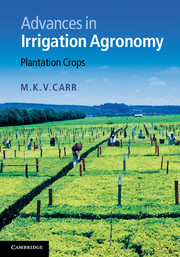Foreword
Published online by Cambridge University Press: 05 May 2012
Summary
Foreword
Water scarcity is one of the most pressing issues facing humanity. Globally, 70% of all water withdrawn from rivers and groundwater is consumed by agriculture and yet, surprisingly, water for producing food hardly gets onto the international development agenda except when there is drought and famine such as in the Horn of Africa in 2011. Despite the media attention there still seems to be little appreciation of water's critical role in producing food and fibre at a time when about 20% of the world's rivers run dry before reaching the sea, and more than 1.4 billion people live in water-stressed river basins – a situation that is set to worsen. By 2050 the world needs to produce as much as 70% more food on less land, using less water, energy, fertiliser and pesticides while at the same time bringing down sharply the level of greenhouse gas emissions. Climate change is yet another dark cloud on the horizon.
This is a daunting challenge but history tells us that we should be optimistic. Irrigated farming was, for example, one of the agricultural and engineering success stories of the twentieth century, witness the Asian ‘green revolution’ in the 1960s and 70s. Food production has more than doubled over the past 50 years in response to a doubling of the world's population and agricultural productivity has risen steadily over the past 40 years. Our understanding of the importance of water ecosystem services has also grown and so too has our appreciation of the need for sustainability and for a balance between the ever-conflicting water demands of people, industry, food and the environment.
- Type
- Chapter
- Information
- Advances in Irrigation AgronomyPlantation Crops, pp. x - xiiPublisher: Cambridge University PressPrint publication year: 2012

